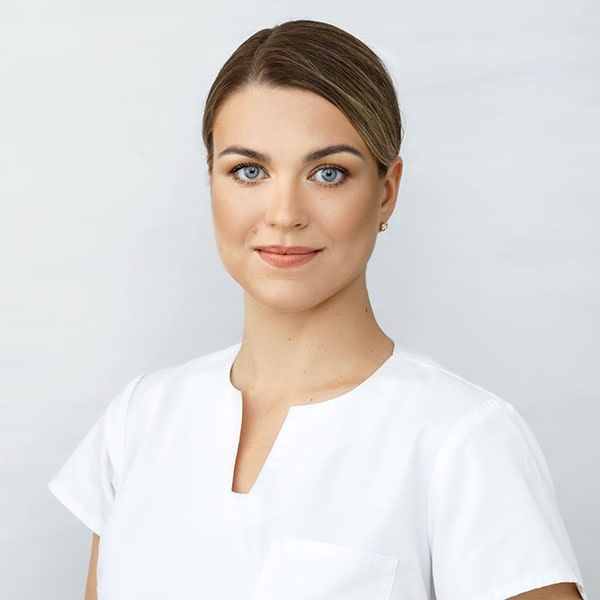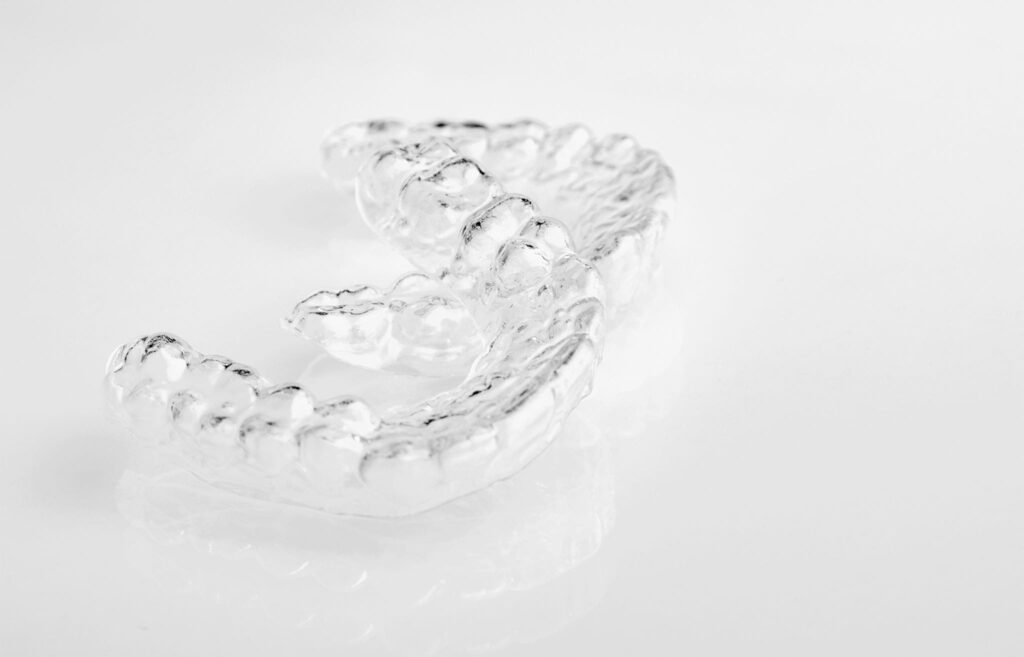
Teeth straightening using clear aligners
According to dentists, the need to correct the bite is obvious. However, patients often get anxious about the unpleasant method of treatment – the installation of an orthodontic structure (braces) and following the strict rules that are imposed.
In recent years, huge changes have taken place in the field of orthodontics. Special teeth-straightening aligners have been released that allow us to correct bite defects significantly more efficiently, faster, and more conveniently than braces. This innovation has become a breakthrough in dentistry and is a long-awaited method of treatment for many patients.
- Clear Aligners and their advantages
- When can aligners be used to straighten teeth?
- Stages of treatment with aligners
- Problems caused by malocclusion
- What are the age restrictions for straightening teeth with aligners?
- Does wearing clear aligners hurt?
- Duration of teeth straightening with aligners
- Changing clear aligner sets
- Wearing clear aligners
- Hygienic care of clear aligners
- Teeth straightening with aligners in our clinic
- Frequently asked question
- Pricelist
Clear Aligners and their advantages
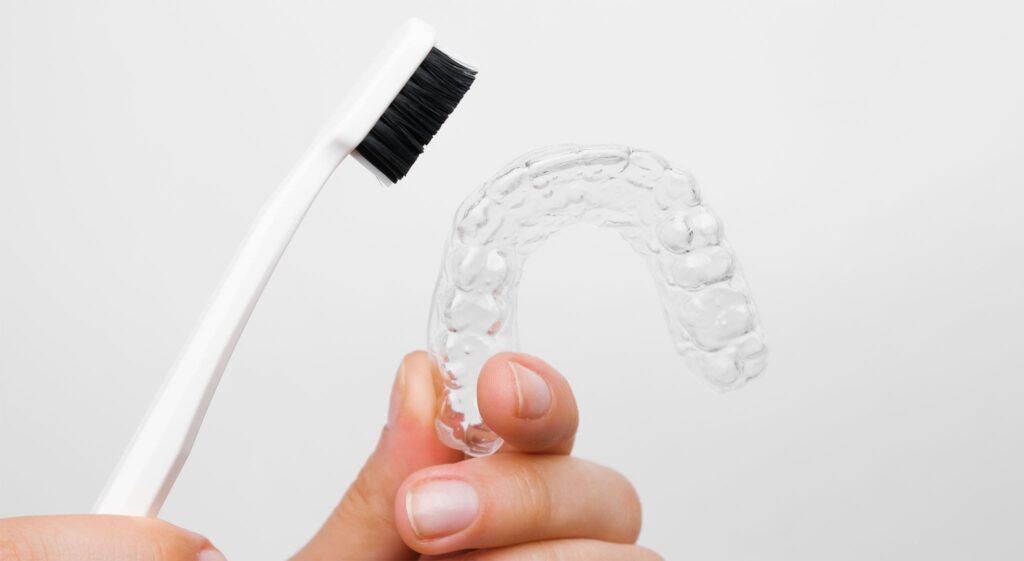
Clear Aligners are transparent, removable, orthodontic devices made of an elasticated medical composite material (often silicone or bioplastic). Clear aligners are made specifically for the patient, accurately reproducing the shape of the dental arches. The aligners hold firmly on the teeth and can be removed as needed, which makes them very easy to get used to, as well as comfortable to wear and care for.
Clear aligners are widely used to treat almost all pathologies of irregular occlusion in both adults and adolescents. The main goal of clear aligners is the same as in the orthodontic braces: The teeth gradually move in the required direction under the influence of a constant traction force.
In order to successfully correct occlusal defects, the sets of clear aligners need to be changed regularly. New sets are made immediately and given to the patient after each visit to the orthodontist. Clear aligners should be worn at least 22 hours a day and can be removed during meals and for oral hygiene practices. The clear aligners are easy to remove and clean. As the name implies, clear aligners are practically invisible so treatment with them ensures the lowest disruption to your aesthetics as possible.
Main advantages of teeth aligners:
- Mobile design
Easy to remove and put on. - Easier oral care
Does not require additional dental hygiene measures. - Ergonomic shape
Clear aligners replicate the shape of the patient’s dental arches, have a smooth surface and are comfortable for everyday use. - Dental health protection
Clear aligners do not damage the enamel of the teeth and the surrounding tissues of the mouth. - Minimal discomfort
No metal structures in the mouth means no pain from rubbing against the complex elements of orthodontic structures. Wearing aligners does not change diction and does not require an additional orthodontic diet. - Aesthetics
The transparent material for clear aligners looks very aesthetically pleasing. The aligners are almost invisible to other people.
When can aligners be used to straighten teeth?
Professional recommendations for the treatment of occlusal abnormalities can only be established by a qualified orthodontist after the initial consultation and X-ray examination.
Clear aligners are a great alternative to traditional non-removable orthodontic constructions (braces) but are much softer and less adaptive. With orthodontic correction of more complex bite defects, braces still remain the single most effective treatment method.
The main indications for straightening teeth with aligners are:
- Slight crossbite (part of the teeth sticking forward in one jaw and back in the other).
- Slight mesial occlusion (teeth of the lower jaw are displaced forward).
- Slight deep bite (the teeth of the upper jaw cover the teeth of the lower jaw).
- Slight open bite (front or side teeth do not touch in closed-mouth position).
- The inclination of one or more teeth to the side.
- The teeth are too close to each other (overlapping teeth).
- Noticeable interdental spaces.
- Improper bite after injury or tooth loss.
- Consolidation of the treatment result after removal of the braces.
- Individual allergic reaction to construction components of braces.
Stages of treatment with aligners
1 – Initial consultation and creation of the treatment plan
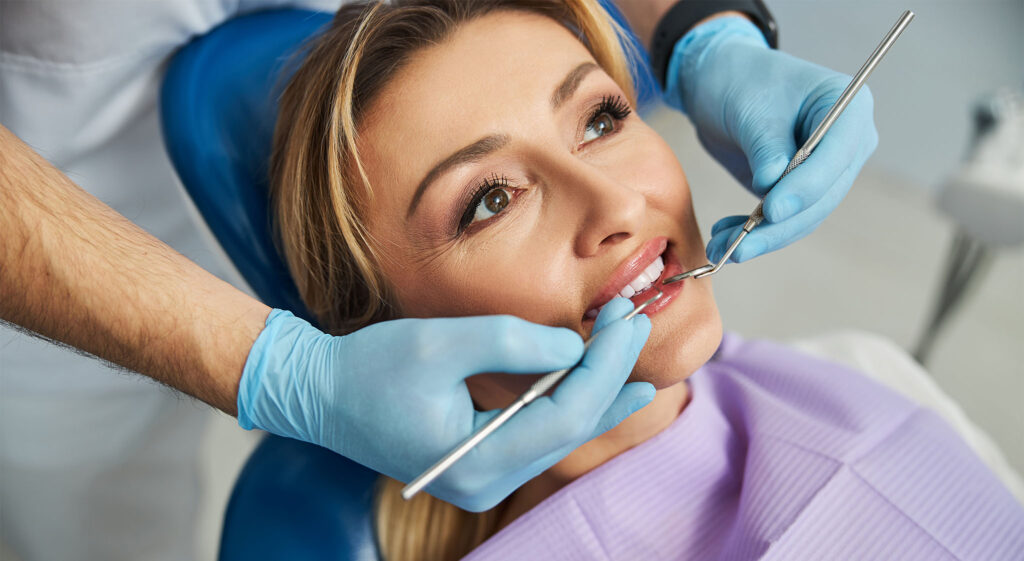
The orthodontist examines the condition of the patient’s teeth and the entire mouth and makes a clinical diagnosis. During this stage, a visual inspection and any required X-ray examinations are performed. On their basis, the most effective method of bite repair is determined and an individual treatment plan is created.
2 – Preparation for orthodontic treatment
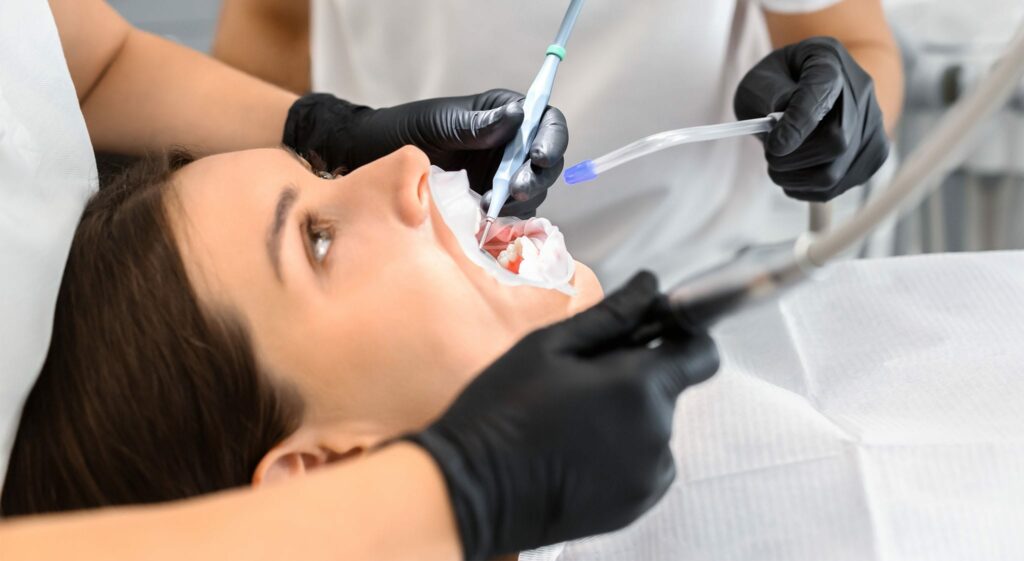
Prior to orthodontic treatment, it is necessary that we ensure good oral health. If necessary, all dental and gum diseases are cured, dental filling is performed, as well as a professional oral hygiene session and tooth enamel strengthening (fluoridation). Preventive and therapeutic procedures for dental diseases are necessary to maintain a beautiful smile during orthodontic treatment.
3 – The creation of aligners
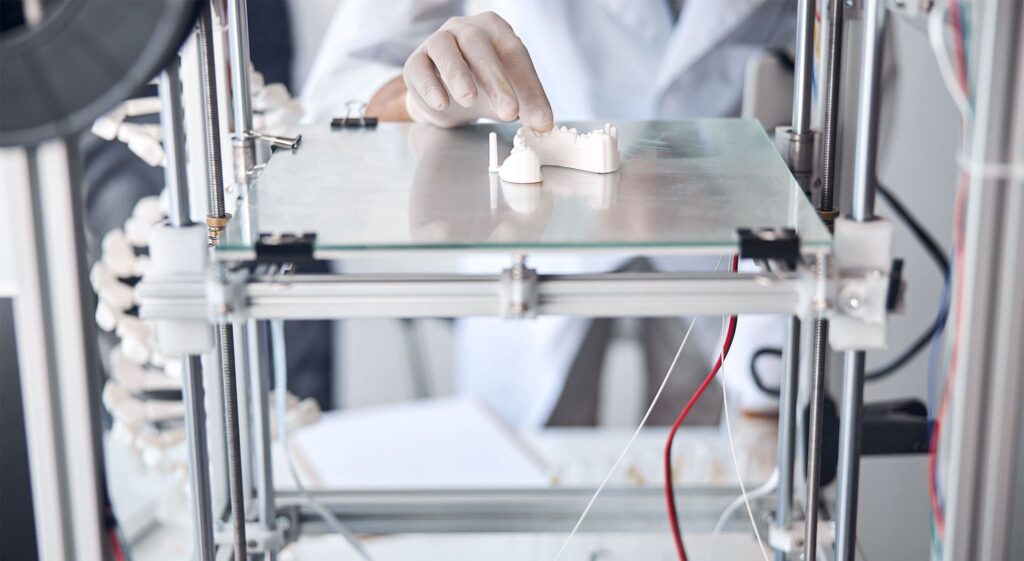
At the beginning of the treatment process, the orthodontist scans the patient’s mouth so that an initial 3D aligners model can be created at the manufacturer labs. Anatomically accurate aligners are produced to increase the effectiveness of the treatment. Modern technologies also make it possible to demonstrate to the patient the final result of their smile before beginning the treatment.
The 3D models are sent to the manufacturer’s workshop where dental technicians will produce the initial set of aligners. Depending on the duration of treatment, the total number of aligners produced may vary. On average, a set of aligners takes up to 7 days to produce.
4 – Treatment process
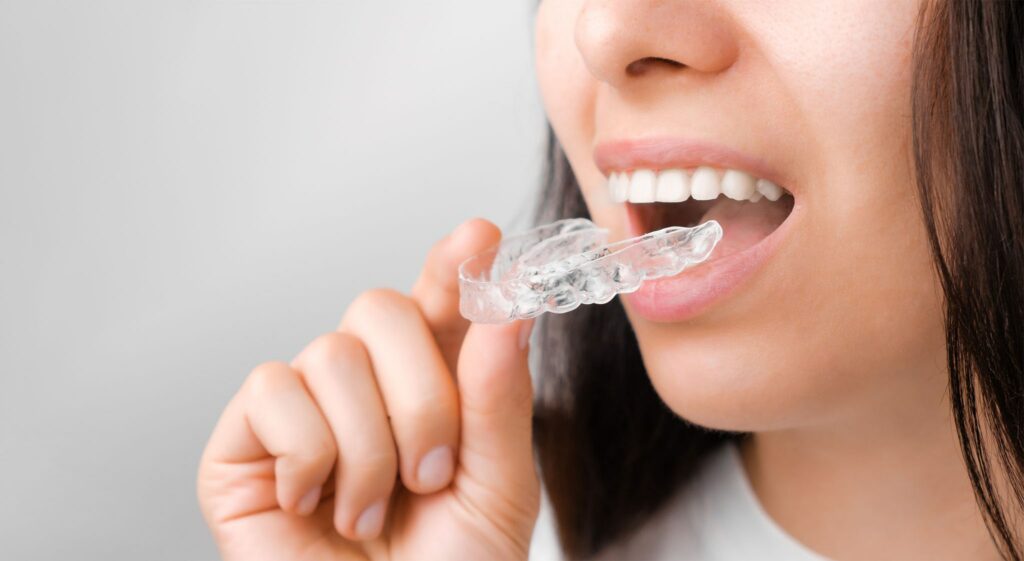
As soon as the orthodontist receives the initial set of aligners, the patient is invited to the clinic. The orthodontist provides detailed, professional advice on the use and maintenance of the correction system.
On average, patients need to have their aligner sets replaced about once every 2-3 months. Therefore, it is necessary that you visit the clinic periodically, adhering to the personalised treatment plan described by the orthodontist. During each clinical examination, the orthodontist evaluates the effectiveness of the treatment, documents the results, and prepares a new set of aligners.
Depending on the complexity of the individual diagnosis, the duration of orthodontic treatment can range anywhere from 8 to 24 months.
5 – Postoperative period
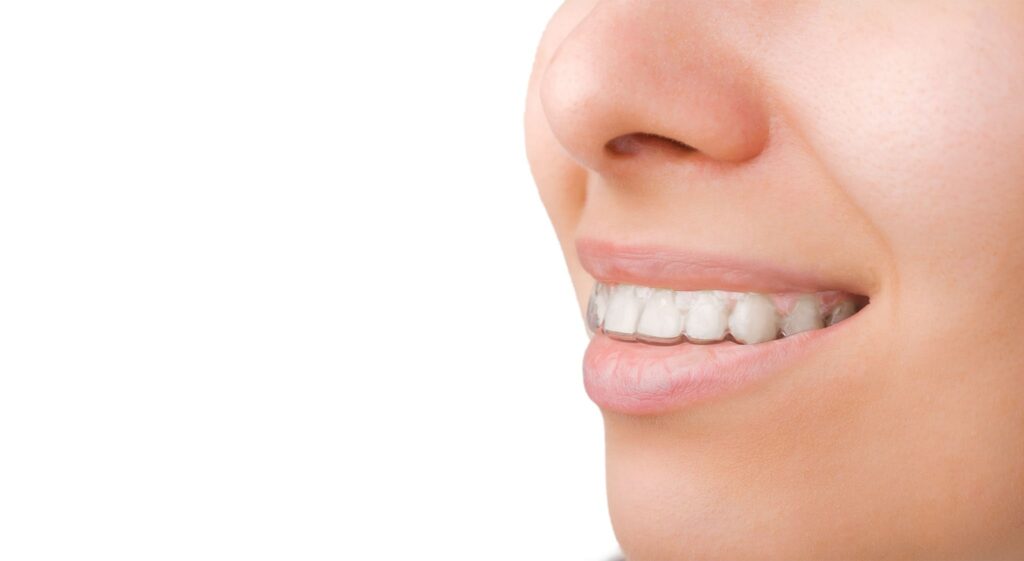
Once the braces are removed and the desired result has been achieved, you now enter the postoperative period. This period is just as important as it allows the teeth to fully set into their new position. As a part of this process, the orthodontist will likely provide a retentive aligner or attach a fixed metal retainer. These hold the teeth in their current position and allow the changes to become permanent. Otherwise, you risk the teeth returning to their original position. The retention period usually lasts around 6 months and the end of the postoperative period is determined by the orthodontist who assesses the condition of the teeth during the follow-up visits.
Problems caused by malocclusion
Bite pathologies can sometimes cause serious problems, which can be divided into three main groups:
- Psychosocial problems associated with impaired facial and jaw aesthetics
People with misalignment of the teeth may hide their smile, may have difficulties communicating, both of which can cause lower self-esteem. - Functional problems
One of the most important factors in a healthy diet is the ability to chew properly. Bite anomalies can reduce the effectiveness of chewing as not all the teeth in one jaw come in contact with their antagonist (teeth in the opposite jaw). A person with a bite problem may need to chew more or swallow poorly chewed food, which can lead to disorders of the digestive system. In addition, malocclusion may cause damage to the jaw joint which may cause a person to feel discomfort or pain when opening and closing their mouth and chewing food. Disorders of the jaw joint may also be a cause of regular headaches. - Other dental problems
Improper occlusion is directly related to the risk of tooth damage and wear, periodontitis, tooth decay and other dental diseases.
Teeth straightening with clear aligners is one of the most popular ways to straighten teeth. It is very important to diagnose malocclusion as soon as possible and correct any defects in a timely manner by seeking help from an experienced orthodontist.
What are the age restrictions for straightening teeth with aligners?
Straightening with aligners may be done for children, but all the first molars must have erupted to perform the treatment. Each patient’s case is individual so the question of when to start treatment can only be answered by an orthodontist who has performed an initial dental examination and all the necessary radiological examinations.
Does wearing clear aligners hurt?
Clear aligners are compact, light and do not usually cause discomfort to the patient. Due to their ergonomic shape and firm fixation, aligners do not cause dictation disorders and unpleasant irritation, nor do they interfere with chewing and brushing teeth. Patients often get used to wearing aligners very quickly. Most patients say they stop feeling aligners only 30 to 60 minutes after they are put on.
Three days after the first application of the aligners a slight pain may be felt due to the pressure they create as they change the structure of your mouth. Painful sensations can be reduced by rinsing with mouthwash or by taking painkillers.
Duration of teeth straightening with aligners
The duration of treatment with aligners depends on the complexity of the patient’s occlusal defects and the mobility of their teeth. On average, the whole treatment process takes from 6 months to around 2 years.
The preliminary duration of treatment can only be determined by the orthodontist, after the initial inspection of the patient’s teeth, and all the dental examination procedures necessary for the diagnosis are performed.
Changing clear aligner sets
Clear aligners adjust the patient’s occlusion by creating a pulling force aimed in the direction of the desired position of each tooth. As the teeth gradually move, the force generated by the set of aligners slowly decreases. Therefore, each set of aligners must be replaced with a new one regularly. This is usually done every 2-3 months. An oral inspection is performed to produce a new set of aligners, and the intermediate result of the treatment is evaluated.
Between 5 and 8 sets of aligners are used during the course of treatment of a minor bite defect. In severe cases, more aligner sets may be required.
Wearing clear aligners
Clear aligners should be worn for at least 22 hours a day. They may only be removed during meals and oral hygiene though it is possible to remove the aligners for a short period of time in exceptional cases (e.g. important meetings, interviews, etc.)
Hygienic care of clear aligners
To keep their aligners functional, patients need to follow some simple hygiene rules:
- Aligner sets must be cleaned daily using a soft brush with a small amount of toothpaste. It is advisable to use a separate toothbrush and not apply strong pressure when cleaning.
- Before putting on the aligners after a meal or brushing teeth, rinse them with cold water.
- When taking off aligners, it is recommended that you place them in a special tray to prevent scratches, cracks, and dust.
- Brush your teeth or rinse your mouth before putting on teeth aligners after a meal.
- It is recommended that you refrain from smoking, drinking beverages with artificial sweeteners, and chewing gum.
- Clear aligners must not be bent, washed with chemical liquids or hot water.
Teeth straightening with aligners in our clinic
Orthodontic constructions of any type are just a tool in the hands of an orthodontist. The outcome of the treatment depends directly on the practical skills of the orthodontist performing the treatment.
The orthodontic specialists working in our clinic are experienced and highly qualified. We offer comprehensive treatment services for both children and adults with occlusal problems. Our patients benefit from the use of most advanced technologies and innovative methods for the correction of malocclusions.
Frequently asked question
Pricelist
Teeth straightening with aligners
| Teeth straightening with aligners (both dental arches) | 3120-4200 € |






